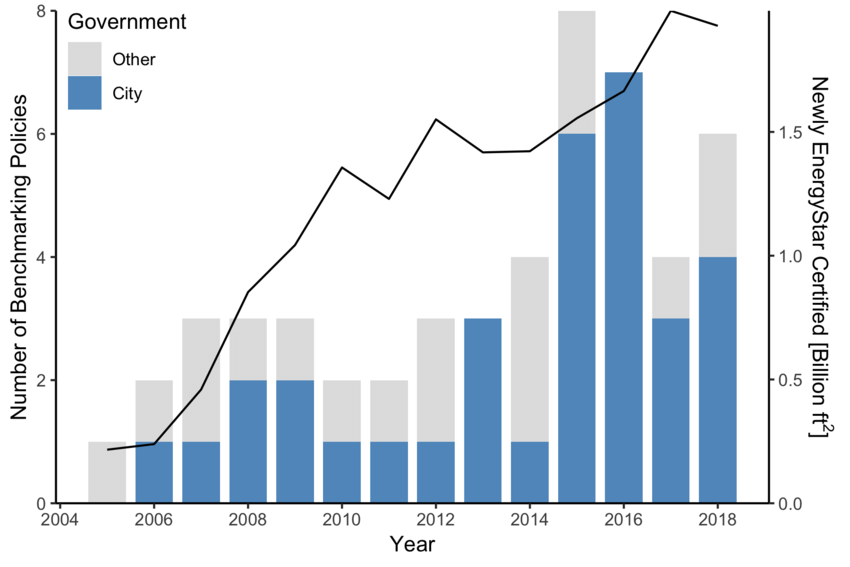
If you’re looking to improve the energy efficiency of your business operations, benchmarking is a great place to start. By understanding how much energy your business uses compared to similar businesses, you can identify areas where improvements can be made. Energy benchmarking can also help you track progress over time and compare results against other businesses in your industry.
Table of Contents
- What is Energy Benchmarking?
- Why Should You Care About Benchmarking?
- How Can Benchmarking Improve Your Business?
- What Are Some Best Practices for Energy Benchmarking?
- Where Can I Find More Information on Benchmarking?
- How to Calculate My Benchmark
- How Do I Submit an Energy Benchmarking Report?
- What is Energy Benchmark Compliance?
- What is a Good EUI?
- Conclusion
What is Energy Benchmarking?
This is the process of measuring the energy performance of a property and comparing it to similar properties. This process can help identify opportunities for energy efficiency improvements and track progress over time.
Why Should You Care About Energy Benchmarking?
There are a number of reasons why you should care about benchmarking:
- It can help you identify opportunities to reduce your energy consumption and save money.
- It helps you track your progress over time in reducing your energy consumption.
- It helps you compare your energy performance to similar buildings, so you can see how you stack up and identify areas where you can improve.
- Finally, you help raise awareness about energy use and encourage building occupants to take action to reduce energy consumption.
How Can Benchmarking Improve Your Business?
Benchmarking can help you improve your business operations by identifying areas where you are using more energy than necessary. By benchmarking your energy usage, you can make changes to improve your energy efficiency and save money.
What Are Some Best Practices for Benchmarking Your Energy Usage?
Some best practices for benchmarking include:
- Use a consistent methodology and metric system when benchmarking energy performance over time. This will help to ensure accurate and meaningful comparisons.
- Make sure to benchmark against similar facilities or buildings in order to get an accurate apples-to-apples comparison.
- Use Energy Star‘s Portfolio Manager tool to benchmark the energy performance of buildings. This tool is free and easy to use, and it provides a comprehensive analysis of a building’s energy usage.
- Use data from utility bills to benchmark energy performance. This data can be used to track progress and identify areas for improvement.
- Work with an energy consultant or other expert to ensure that benchmarking is being done properly. This can help to avoid errors and ensure that the process is as effective as possible.
Where Can I Find More Information on Benchmarking?
There are many places you can find more information on energy benchmarking. Some good places to start include the U.S. Department of Energy’s website and the EPA’s ENERGY STAR website. You can also find a lot of helpful information by doing a search on the internet or by talking to your local utility company.
How to Calculate A Benchmark
This is calculated by dividing the total amount of energy used by a building over a period of time by the total amount of square footage of the building.
How Do I Submit a Benchmarking Report?
The first step is to create an account and log in to the ENERGY STAR Portfolio Manager. Once you are logged in, click the “Add Property” button on the left side of the screen. Enter your property information and click “Save.”
Next, click on the property address and select “Add a new meter.” Enter your energy consumption data for the past 12 months and click “Save.”
Finally, click on the “Generate Report” button at the top of the page.
What is Energy Benchmark Compliance?
This compliance is the process of ensuring that a building meets the energy performance standards set by a particular benchmarking system. Benchmarking systems are used to compare the energy performance of buildings and to identify opportunities for improvement.
What is a Good EUI?
EUI stands for Energy Use Intensity. This number indicates how efficiently a building uses energy. It is calculated by dividing the total amount of energy used by the building (in kBTUs) by the square footage of the building. A lower EUI means that the building is more energy efficient.
Conclusion
Overall, benchmarking is a great way to improve your business’s energy efficiency. By understanding how much energy your business uses compared to similar businesses, you can identify areas where improvements can be made. Benchmarking can also help you track progress over time and compare results against other businesses in your industry.